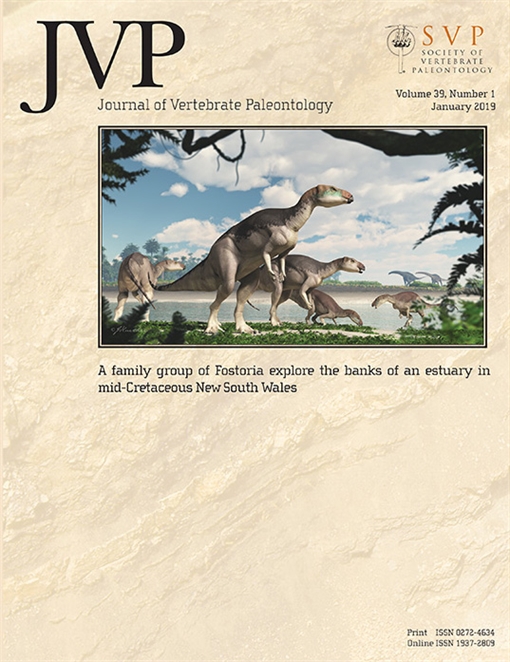Yu He Teng, Masatoshi Sone, Ren Hirayama, Masataka Yoshida, Toshifumi Komatsu, Suchada Khamha, Gilles Cuny
Journal of Vertebrate Paleontology 39 (1), (22 August 2019) https://doi.org/10.1080/02724634.2019.1573735
Cretaceous fish fossils are reported from Malaysia for the first time. They were found with dinosaur and turtle remains in nonmarine sediments in the interior of Pahang State, Peninsular Malaysia. This fish assemblage consists mostly of isolated teeth, with minor amounts of noncranial remains, including vertebral centra, scales, coprolites, and hybodont fin spines. Over 100 fish teeth were examined. Nine taxa were confirmed from this fish assemblage: six (identified and unidentified) species of hybodont sharks, Heteroptychodus kokutensis, Isanodus paladeji, Lonchidion aff. khoratensis, Mukdahanodus aff. trisivakulii, Egertonodus sp., and Hybodontidae indet., and three species of actinopterygians (ray-finned fishes): ‘Lepidotes’ sp., Halecomorphi indet., and Ginglymodi indet. This fish assemblage has strong affinities with Early Cretaceous (Barremian–early Aptian) faunas of Thailand, because the four hybodont species, H. kokutensis, I. paladeji, L. khoratensis, and M. trisivakulii, were previously known only from the Sao Khua Formation (Khorat Group) and equivalent strata of Ko Kut (Kut Island). Egertonodus has been confirmed in Asia for the first time. Overall, this fish assemblage shows a close linkage to Early Cretaceous (Barremian–early Aptian) faunas of Thailand. Based on faunal composition and biostratigraphic correlation, we suggest a Barremian–early Aptian age for this new fauna from Malaysia.

